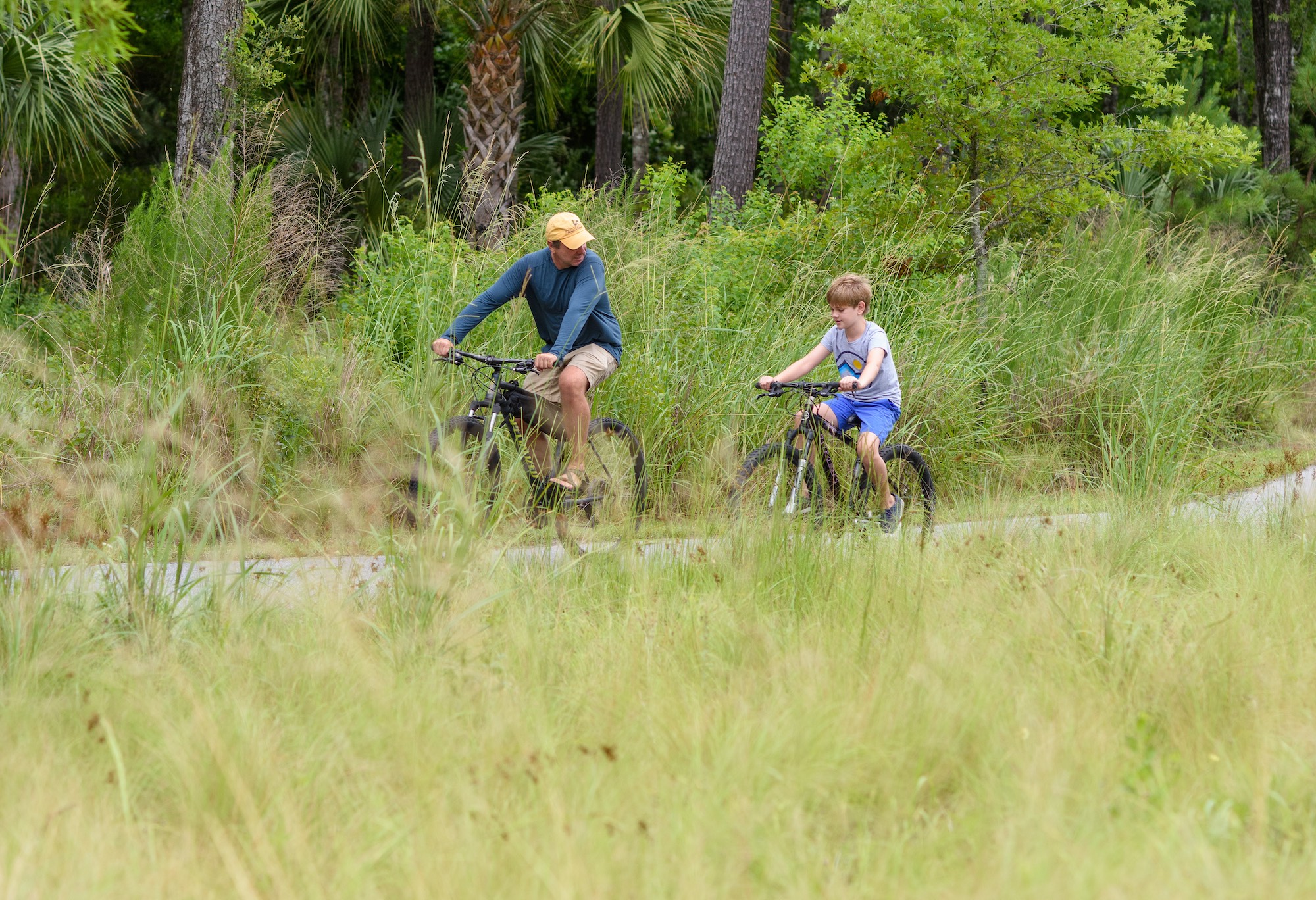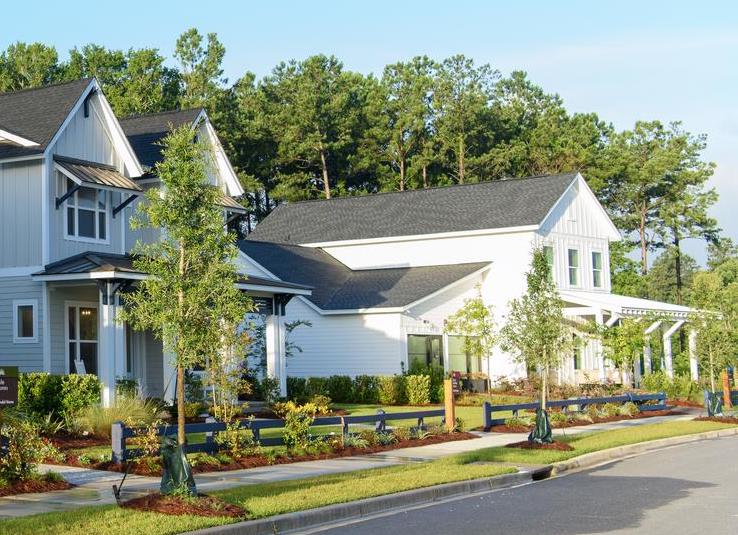Landscaping With Environmental Stewardship in Mind

A commitment to the natural environment is one of the guiding principles behind the development of Point Hope, and careful consideration of the integrity of the landscaping here is one of the many ways that planners and landscape architects work towards honoring this commitment as neighborhoods, roadways and parks evolve.
Native Grasses
Planting with native grasses is an important strategy when considering the environmental impact of development. It’s a growing practice for home landscapes, and it’s also increasingly being used (and in some cases mandated) by municipalities and planned communities.
Although native grasses typically take longer to establish than traditional turf grass, the long-term benefits make native grasses a superior solution for common areas from both an environmental and maintenance perspective. Native grasses like lovegrass, for example, which is used along Point Hope Parkway and at the entrance to the First Light neighborhood, only require mowing once a year, drastically reducing ongoing maintenance costs. Lovegrass and other native grasses also require fewer chemical applications and less irrigation than turf grass, making them a smart environmental and economical choice.
After just a couple of growing seasons, the visual benefits of native grasses in the landscape becomes apparent. With varieties that flower at different times of year, the results are quite striking.

Street Trees
A thoughtful street tree plan is one of the many details that contribute to the visual appeal of the neighborhoods at Point Hope, but street trees also play an important environmental role within the community.
Street trees are planted annually on recently completed roadways throughout the community. Environmentally, they help clean the air by transforming harmful gasses into oxygen and other helpful natural gasses, and they also help with drainage and stormwater management. The first 30% of the water from a rain event is absorbed by leaves and branches before it hits the ground, and a portion of the rain that does fall around a tree is quickly absorbed by the tree’s root system.
As the trees mature, they help create a unified and cohesive look to the neighborhoods and provide shade and a buffer between sidewalks and roadways, resulting in a comfortable environment for pedestrians and bikers. In some cases, they also provide filtered privacy for yards and porches.
The species and location of the street trees at Point Hope are carefully selected to ensure only varieties with a proven survival rate and growth characteristics that are appropriate to our region are used. The City of Charleston oversees the street tree program and directs the location and tree selections for each neighborhood and street. Typical species include palm trees and a variety of oaks, including Overcup, Cherry Bark, Willow and Shumard.